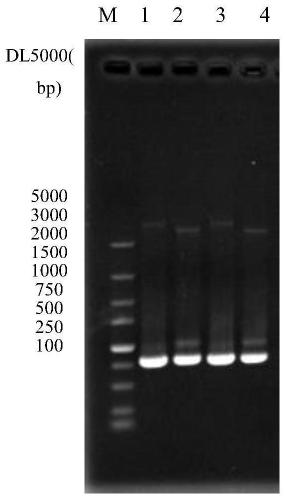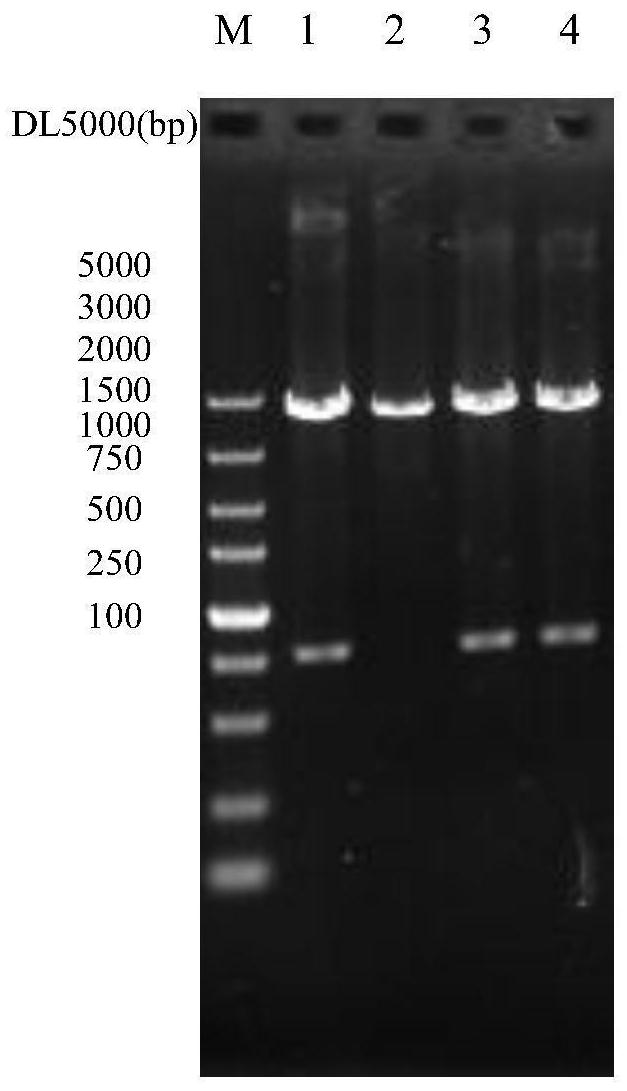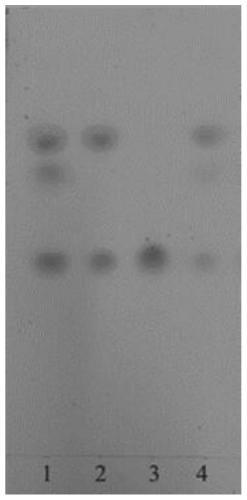Genetically engineered bacterium for producing 5alpha-androstanedione and application thereof
A technology of genetically engineered bacteria and genes, applied in genetic engineering, application, plant genetic improvement and other directions, to achieve the effects of low raw material prices, high production efficiency, and clean and environmentally friendly preparation methods
- Summary
- Abstract
- Description
- Claims
- Application Information
AI Technical Summary
Problems solved by technology
Method used
Image
Examples
Embodiment 1
[0034] The acquisition of the target gene 5α-reductase gene of embodiment 1
[0035] According to literature research, 5α-reductase from mice has been successfully expressed in Saccharomyces cerevisiae cells and exhibited corresponding activity; combined with NCBI sequence search and comparison analysis, it was found that 5α-reductase from Treponema denticola was closely related to small The 5α-reductase in the mouse has a higher homology and is of bacterial origin. Therefore, the original 5α-reductase gene (ie, SEQ ID NO.1) in Treponema denticola was selected as the original gene of this invention.
[0036] The original 5α-reductase gene sequence from Treponema denticola was sent to Jinweizhi Company to synthesize a 5α-reductase gene that conforms to the codon preference of mycobacteria.
[0037] Using the synthesized plasmid PUC57-5α containing the 5α-reductase gene sequence (this plasmid is a common conventional plasmid used in gene synthesis) as a template, and the restrict...
Embodiment 2
[0040] The construction of embodiment 2 genetically engineered bacteria
[0041] 1. Construct the pMV261-5α plasmid, the process including:
[0042] The 5α-reductase gene of the target fragment obtained in Example 1 was double-digested with BamH I and HindIII respectively with the shuttle plasmid pMV261 in a certain ratio and purified, then ligated overnight at 16°C, transformed into Escherichia coli DH5α competent cells, and used Kana Screen the genetically engineered bacteria on a mycin plate, pick the transformants for PCR and double enzyme digestion verification, that is, after the recombinant plasmid is digested with BamHI and Hind III, gene fragments of about 4.5 kb and 0.8 kb in size are released, and the double enzymes The correct plasmid was verified and sent to Jinweizhi Company for sequencing, and the correctly sequenced plasmid was the recombinant plasmid pMV261-5α.
[0043] 2. Construction of genetic engineering strain MNR M3△ksdD / 261-5α:
[0044] (1) Preparatio...
Embodiment 3
[0048] Example 3 The method and product identification of genetically engineered bacteria MNR M3△ksdD / 261-5α transforming PS to produce 5α-AD
[0049] The strains were divided into two groups, and the performances of the following strains were measured respectively. Grouped as follows:
[0050] Experimental group: genetically engineered bacteria prepared in Example 2 of the present invention: MNR M3△ksdD / 261-5α
[0051] Control group: Mycobacterium aureus control strain MNR M3△ksdD / 261
[0052] The construction method of the control bacterium MNR M3△ksdD / 261: the plasmid pMV261 plasmid is directly introduced into the host bacterium MNRM3△ksdD, the specific import method is the same as step 2 in Example 2, the only difference is that the plasmid is different (i.e. (1) Competent Cell preparation (2) Electrotransformation: (3) Recombinant screening and verification), the following Mycobacterium aureus control strain MNR M3△ksdD / 261 is the same strain.
[0053] 1. Bacteria acti...
PUM
 Login to View More
Login to View More Abstract
Description
Claims
Application Information
 Login to View More
Login to View More - R&D
- Intellectual Property
- Life Sciences
- Materials
- Tech Scout
- Unparalleled Data Quality
- Higher Quality Content
- 60% Fewer Hallucinations
Browse by: Latest US Patents, China's latest patents, Technical Efficacy Thesaurus, Application Domain, Technology Topic, Popular Technical Reports.
© 2025 PatSnap. All rights reserved.Legal|Privacy policy|Modern Slavery Act Transparency Statement|Sitemap|About US| Contact US: help@patsnap.com



